Armyworm (Corn)
Mythimna unipuncta (Haworth)
Search the Pest & Crop Newsletter
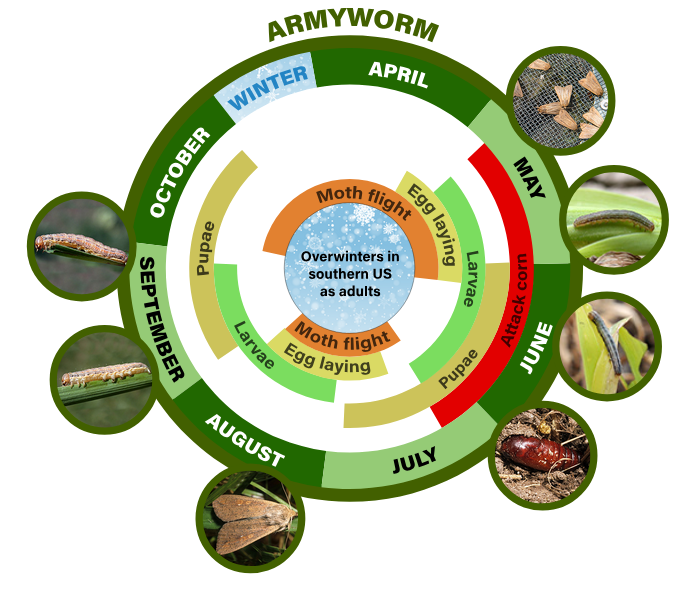
The ability to see these full-sized life-cycle images is currently disabled to resolve an issue.
Related Video Resources:
Appearance and Life History
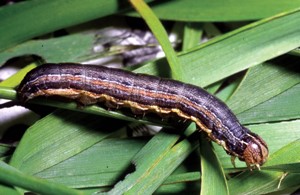
Photo by J. Obermeyer
Several species of armyworms can be found in the Midwest every year, the true armyworm is the most common and has the most potential to cause widespread damage on grass species. Several weeks of cool wet weather in the spring favor armyworm development and reduces the normal activity of parasites and predators, thus influencing the growth of armyworm populations.
The adult armyworm is a pale brown moth with a white dot in the center of each forewing.
The young larva is green in color and moves in a looping motion. A full-grown larva is dull-green to brown in color with alternating light and dark stripes running the length of its body. Upon reaching larval maturity, it is about 1-1/2 inches (38 mm) long.
Larvae feed primarily on grass crops. Infestations usually develop in grass pastures, grassy fence rows, roadsides and in small grain fields where plants are densely populated, lodged or are matted against the ground.
Once the larvae have consumed the readily available food, or small grains mature, they move into other crops, most notably corn.
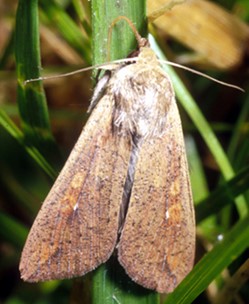
Photo by J. Obermeyer
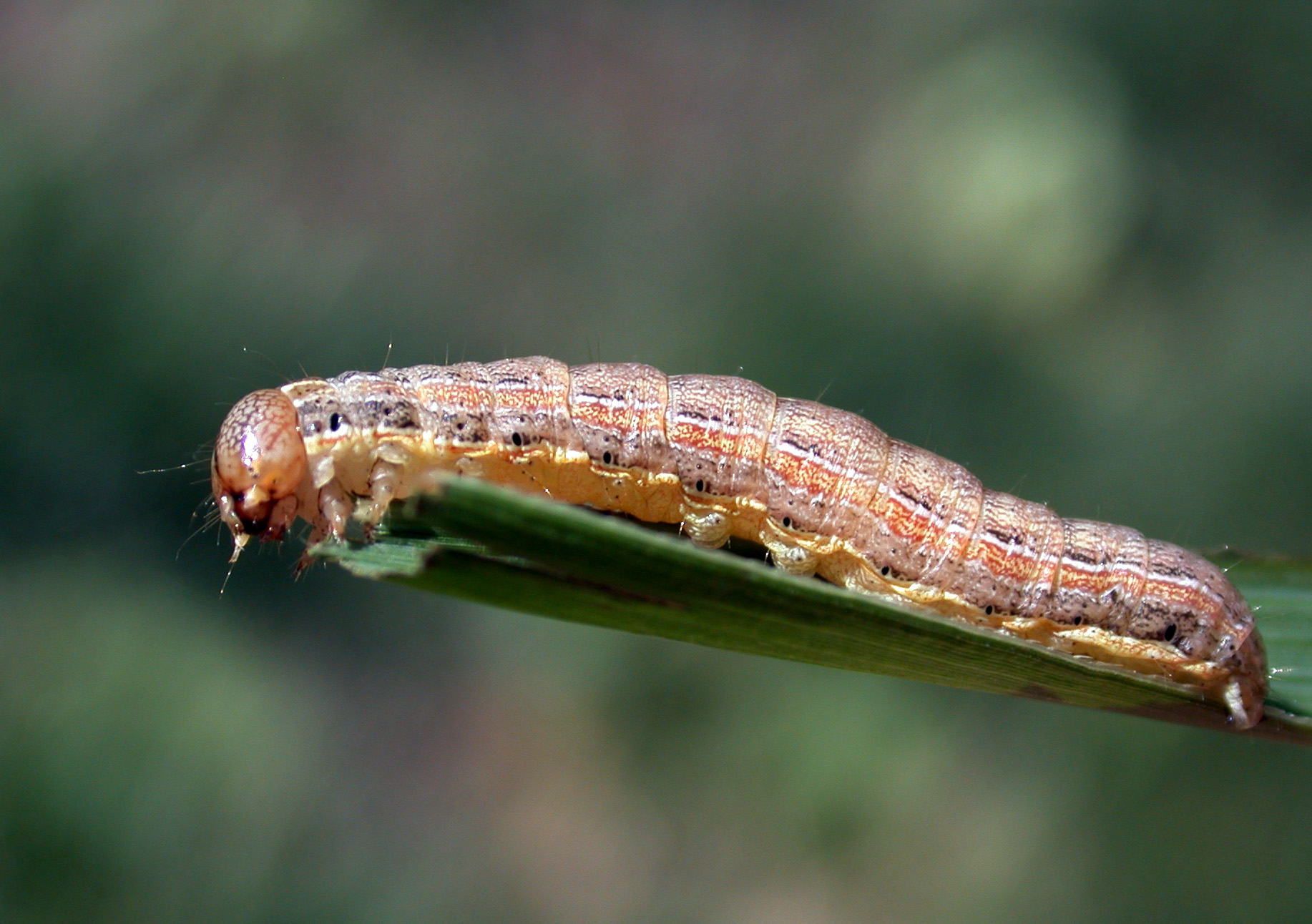
Photo by J. Obermeyer
Damage
Armyworm feeding gives corn a ragged appearance, with defoliation occurring from the leaf edge toward the midrib. Damage may be so extensive that most of the plant, except leaf midribs and the stalk, is consumed. A highly damaged plant may recover if the growing point has not been destroyed.
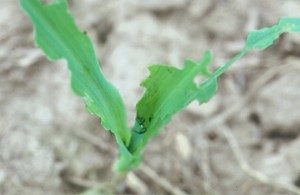
Photo by J. Obermeyer
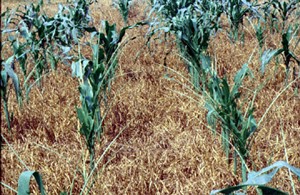
Photo by J. Obermeyer
Sampling Method
- Necessary only in fields where larvae or their damage is noted. When scouting early in the season, be especially watchful for signs of armyworm feeding damage where corn was no-tilled into a grass cover-crop or in areas of corn fields that border small grains or grassy areas.
- 5 areas of the field, 20 consecutive plants
- Determine the percentage of damaged plants in each sample set. Note the number of larvae observed and estimate their size (length).
- Estimate the percentage of plants damaged by armyworm and note the location(s) of the infestation. The percentage of plants showing feeding damage can be estimated on a per plant basis or as a portion of the total field acreage (i.e., if 5 acres of a 50 acre field have armyworm feeding damage, report it as 10% of the field with damage).
Management Guidelines
Corn Insect Control Recommendations:
- If more than 50% of the plants show armyworm feeding and numerous live larvae are less than 1-1/4 inches (31 mm) long, a control may be necessary. Larvae greater than 1-1/4 inches (31 mm) will soon be pupating and the application of a control is not usually justified since the damage has already been done. If armyworms are detected migrating from areas bordering fields, or from waterways or other grassy areas within fields, spot treatments in these infested areas are possible if the problem is identified early enough.
- Good grass control and the avoiding of “green bridges” where grassy weeds and cover crops overlap with corn will lower the chance of an armyworm outbreak. Watch for armyworms migrating out of maturing small grains into corn. Planting into standing grass cover crops and then applying burn-down herbicides may increase the chance of armyworm attack.

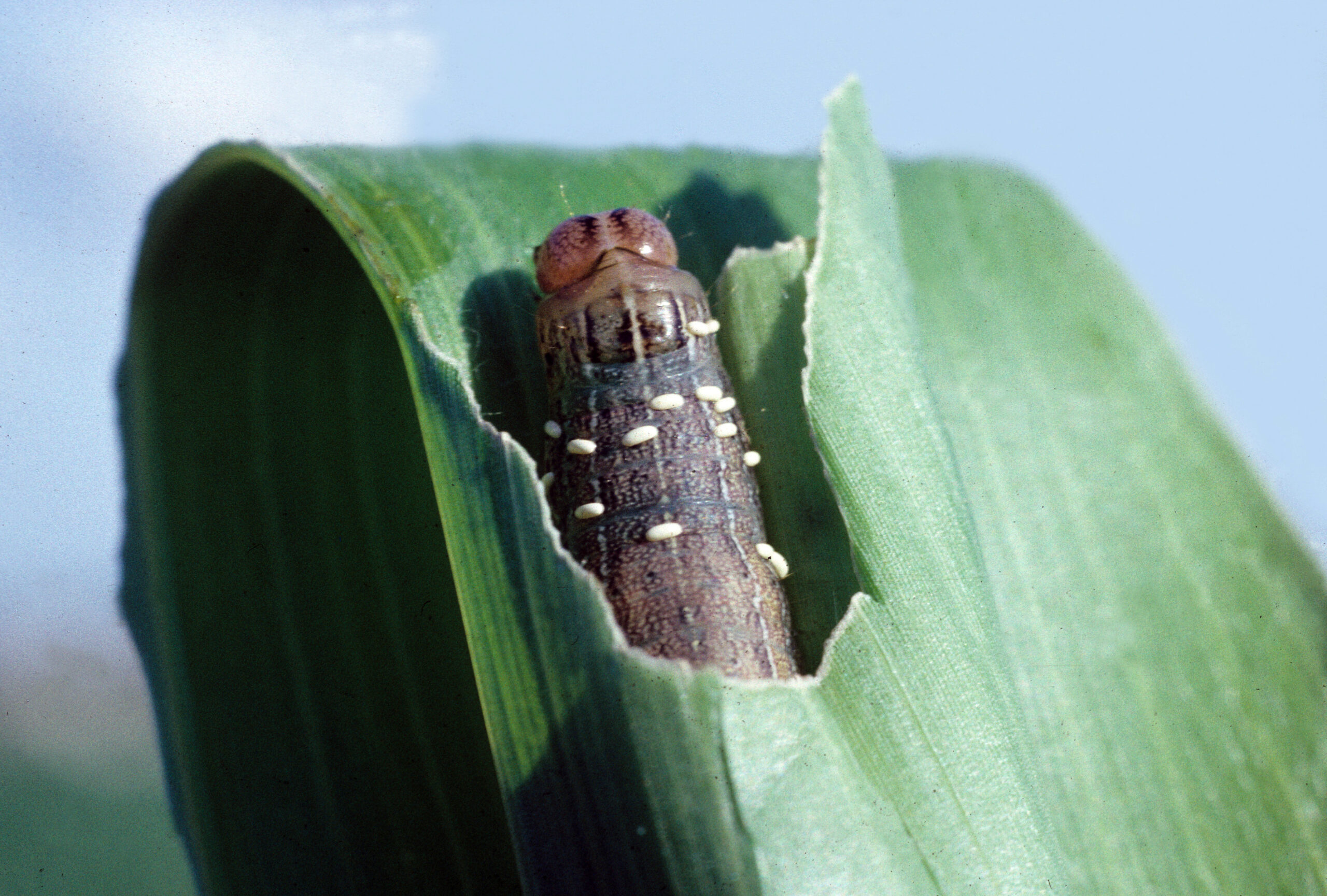
Photo by J. Obermeyer
Before treating, inspect larvae for the presence of small white “egg-shaped” structures, usually just behind the head. These are the eggs of a parasitic fly and indicate that parasitized larvae will soon stop feeding and eventually die.